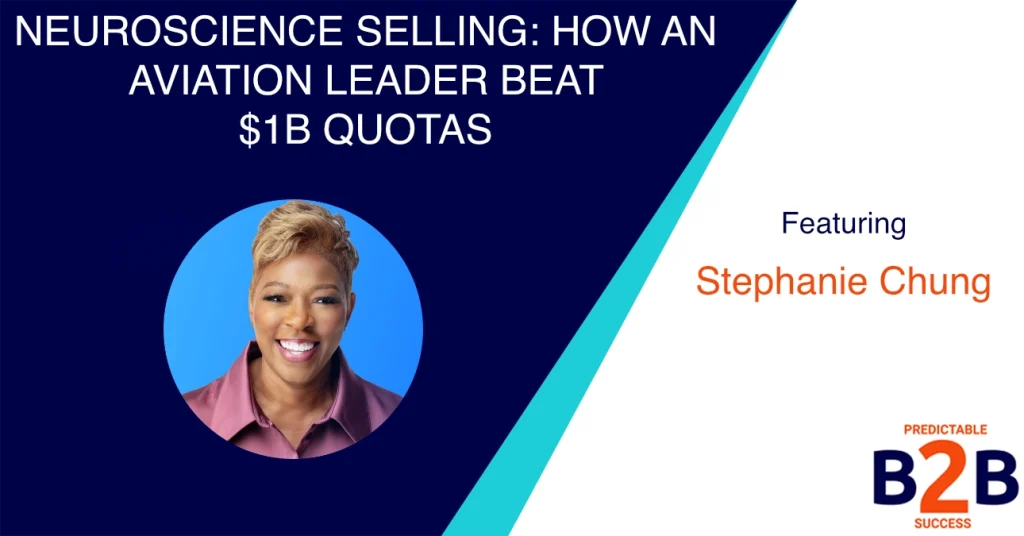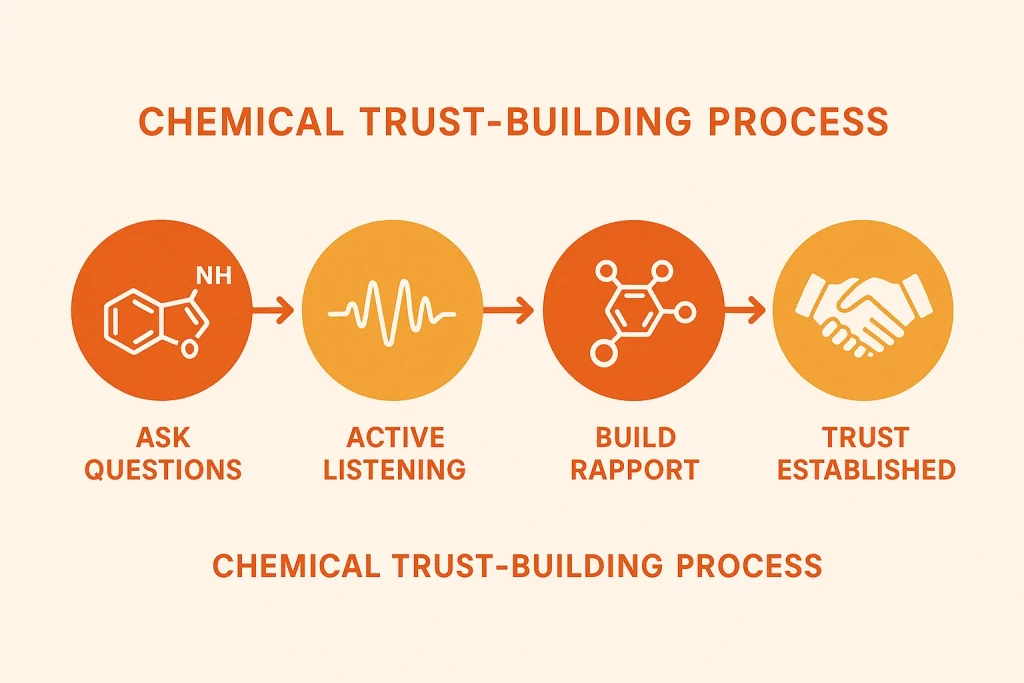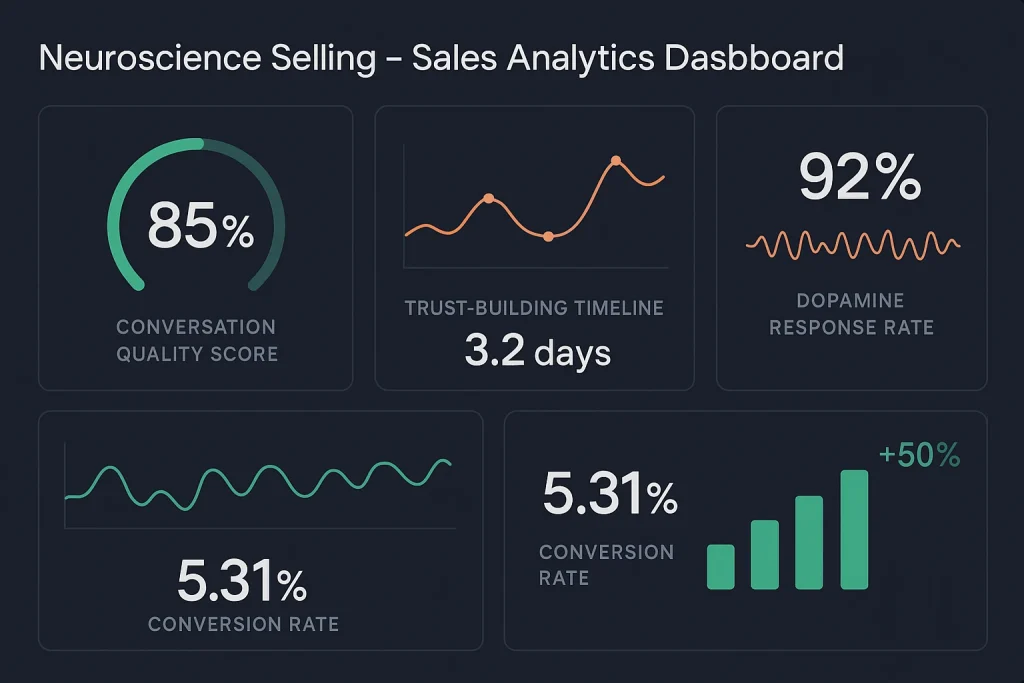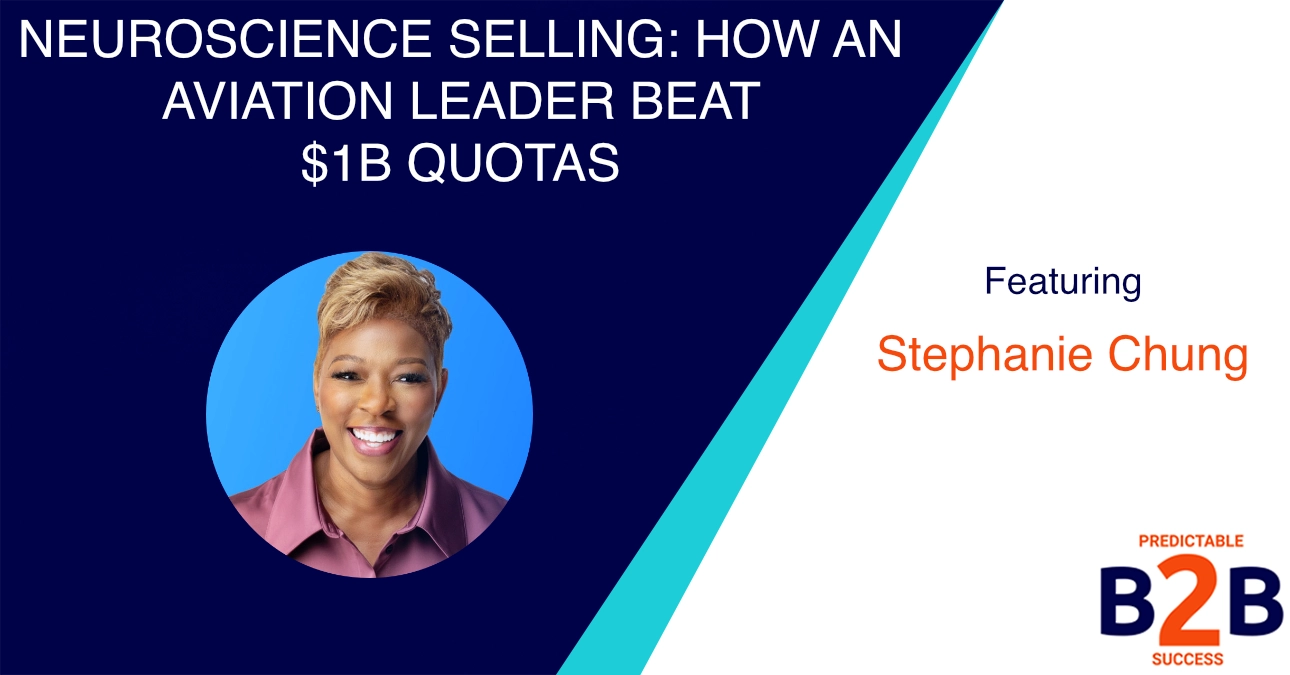
The $200 billion B2B sales training industry has a dirty secret: 70% of salespeople still lack formal training, and traditional methods are failing spectacularly.
While everyone’s still teaching “features and benefits,” neuroscience selling is quietly generating 353% average ROI by understanding what actually happens in your prospect’s brain during conversations.
This isn’t another sales methodology. It’s a complete paradigm shift that replaces guesswork with brain science.
Table of Contents
The Traditional Sales Training Failure Rate
Traditional sales training operates on a fundamentally flawed assumption: that buyers make rational decisions based on careful evaluation of facts.
The reality is far different. Neuroscience Sales tactics are science-based, not based on guesswork. Emotional Responses Drive Purchase Decisions, according to Dr. Terry Wu, who holds a Ph.D. in Neuroscience from Vanderbilt University.
Here’s what the numbers reveal about traditional approaches:
- Only 33% of organizations measure training impact on financial outcomes
- 46% struggle to demonstrate ROI from employee training
- 80% of companies using traditional methods fail to understand consumer behaviors
- 67% of online shopping carts are abandoned before purchase
The problem isn’t effort—it’s methodology.
Meet the Expert: Stephanie Chung’s Billion-Dollar Track Record
Before diving into the neuroscience behind effective selling, it’s crucial to understand the source of these insights. Stephanie Chung brings a unique combination of real-world sales leadership and scientific rigor to this discussion.

With 35 years in aviation, Chung’s career trajectory reads like a masterclass in breaking barriers: from baggage handler to becoming the first African American private aviation company president. She’s served as Chief Growth Officer at Wheels Up and President at JetSuite, consistently leading teams that beat billion-dollar quotas year after year.
But what sets Chung apart isn’t just her impressive resume—it’s her systematic approach to understanding why traditional sales methods fail. As the author of “Ally: How to Lead People Who Are Not Like You” and creator of “Neuroscience Selling, powered by conversational intelligence,” she bridges the gap between academic brain science and practical sales application.
Her board positions with organizations like the Make-A-Wish Foundation and the National Business Aviation Association demonstrate her commitment to developing people. This passion drove her transition from pure sales leadership into helping others understand the science behind effective communication.
“One of the things that I absolutely love about the career… what I found is that I loved, yes, aviation and planes and all the stuff that goes with it, but I really loved developing people,” Chung explains. “What gives me great joy is being able to be a leader who develops other leaders.”
This combination of executive-level sales experience with deep curiosity about human psychology makes her insights particularly valuable for understanding the ROI differences between traditional and neuroscience-based approaches.
Watch the Complete Interview: Neuroscience Selling in Action
The insights throughout this article are drawn from an in-depth conversation with Stephanie Chung, where she shares the specific techniques and real-world examples that generated her billion-dollar results.
In this interview, you’ll discover:
- The exact conversation framework that closed a $20M jet sale
- How brain chemistry affects every sales interaction
- Why 40% of deals are lost to “no decision” (and how to prevent it)
- Practical techniques for raising dopamine during prospect conversations
- The difference between traditional rapport-building and neurochemical trust creation
Watch the full interview below to see how these principles apply in real sales scenarios:
The examples and data points discussed throughout the rest of this article come directly from this conversation, giving you the complete context behind each neuroscience selling technique.
What Neuroscience Selling Actually Measures
Unlike traditional sales training that focuses on scripts and objection handling, neuroscience selling examines chemical reactions occurring in the buyer’s brain during selling conversations.
Stephanie Chung, who led teams beating billion-dollar quotas consistently, explains: “Conversational intelligence is really your ability to have a conversation with someone and get their brain primed and prepped for success. Success, partnership and trust.”
The Brain Science Behind Buying Decisions
Research reveals startling facts about how decisions actually happen:
- 95% of purchase decisions are made by emotional brain areas, not analytical reasoning
- 11 million bits of information are processed per second by the brain
- Only 40-50 bits are handled by conscious awareness
- 2-3 times more likely to buy when fear of missing out is triggered vs. gaining benefits
Without Emotions, We Can’t Decide Anything – Research with people who have injuries or tumors in the brain’s emotional response areas reinforces the importance of emotions. If a stroke, for example, damages areas in the parts of the brain that are responsible for emotions, the patient will suffer both a lack of emotion and an inability to make decisions.
ROI Comparison: Traditional vs Neuroscience Methods
Traditional Sales Training ROI
The numbers tell a sobering story:
Investment Returns:
- Average sales training ROI: 353% (impressive but inconsistent)
- Annual spend per employee: $2,000 (significantly undervalued)
- Organizations measuring ROI show 24% higher profit margins
Performance Gaps:
- Only 17% of companies report having effective training programs
- 70% of salespeople lack formal training entirely
- 46% of organizations can’t demonstrate training ROI
Neuroscience Selling ROI
Neuroscience-based approaches deliver measurably different results:
Conversion Improvements:
- 50% increase in net sales per employee with continuous brain-based training
- 10% overall sales increase documented in controlled studies
- 5.31% conversion rates achieved by top performers (vs 1.1-2.4% industry average)
Behavioral Changes:
- Faster trust-building through dopamine activation
- Reduced cart abandonment through psychological trigger awareness
- Improved objection handling via emotional state management

Real-World Application: The $20M Jet Sale
Chung shared a compelling example that illustrates the difference between approaches:
“I had a gentleman call me and it was a big company and this particular company was with one of my competitors… So I go into the meeting with the gentleman, and I start asking questions. Now, I’m not asking questions about his needs for flying or where he’s flying to or how many passengers. All that stuff I already knew had already been asked. I started asking questions about. About his childhood and his upbringing.”
Through understanding the prospect’s financial belief system rather than just budget capacity, she discovered he wasn’t psychologically ready for a $20M purchase—despite having the money.
Traditional Result: Pressure to close, eventual lost deal Neuroscience Result: Charter recommendation, long-term trust, multiple referrals
The key difference? Understanding brain chemistry over spreadsheet logic.
The Science of Trust-Building
Traditional sales teaches rapport-building through mirroring and small talk. Neuroscience selling operates at the chemical level.
Dopamine Activation Strategies
“One of the ways that you can raise people’s dopamine, which is the feel good chemical, is just to talk and ask them questions about themselves. Right. That’s one of the reasons why we all like to talk about ourselves because it actually raises our chemicals and we feel good about it.”
This isn’t manipulation—it’s creating an environment where positive chemicals support clear thinking.

Practical Applications
Instead of: “Tell me about your current solution’s pain points.”
Try: “What originally drew you to this industry?” (dopamine-raising personal question)
Instead of: “Here are our product features.”
Try: “Help me understand what success looks like in your world.” (curiosity-building approach)
Measuring Neuroscience Selling Impact
Organizations implementing brain-based sales methods track different metrics:
Traditional Metrics Still Matter
- Revenue growth
- Conversion rates
- Average deal size
- Quota attainment
- Sales cycle length
Neuroscience-Specific Indicators
- Conversation quality scores
- Trust-building timeline reduction
- Objection frequency decreases
- Follow-up engagement rates
- Referral generation patterns
Implementation Framework
Based on my experience ghostwriting educational content for B2B tech startups from seed to Series C, here’s how to implement measurement:
Phase 1: Baseline Chemical Awareness (Weeks 1-2)
- Train the team on basic brain chemistry principles
- Implement conversation intelligence tools
- Establish emotional state tracking
Phase 2: Behavioral Integration (Weeks 3-8)
- Practice dopamine-raising questioning techniques
- Develop trust-priming conversation starters
- Create customer emotional journey maps
Phase 3: Results Optimization (Ongoing)
- A/B test traditional vs neuroscience approaches
- Track chemical indicator metrics
- Refine based on brain response data
Industry-Specific Applications
B2B Tech Startups (My Specialty)
Working with funded B2B tech companies, I’ve observed that neuroscience selling is particularly effective for:
SaaS Sales Cycles:
- Understanding decision-maker anxiety around change
- Addressing “fear of messing up” (FOMU) vs traditional FOMO tactics
- Building long-term platform relationships
Enterprise Deals:
- Managing multiple stakeholder brain states
- Creating psychological safety for large investments
- Developing trust across extended decision timelines

Professional Services
Professional services and finance came out on top for having the highest average conversion rate in recent studies—likely because these industries already focus on relationship-building and trust.
The LinkedIn Content Strategy Connection
As someone who ghostwrites LinkedIn content for C-suite leaders, I’ve noticed neuroscience principles dramatically improve engagement:
Traditional LinkedIn Post: “Our new feature increases efficiency by 40%”
Neuroscience-Informed: “What would you do with an extra 3 hours each week?” (emotional future-state visualization)
The brain-based approach consistently generates higher engagement rates because it triggers curiosity and chemicals related to personal relevance.
Implementation Challenges and Solutions
Common Obstacles
“This Feels Manipulative”: Neuroscience selling isn’t manipulation—it’s optimizing for clear communication. You’re creating conditions where prospects can think clearly, not forcing decisions.
“Too Complex for Our Team”: Start with one principle: asking questions that raise dopamine. Everything else builds from there.
“ROI is Hard to Measure”: Organizations that actively measure training ROI see 24% higher profit margins than those that don’t. The measurement effort itself drives results.
Digital Implementation
Through my digital PR and ghostwriting work, I’ve seen neuroscience principles successfully applied to:
Email Sequences:
- Subject lines triggering curiosity chemicals
- Content structure optimizing for attention spans
- CTA placement based on decision-making science
Content Marketing:
- Headlines addressing emotional states
- Educational sequences building trust through value
- Social proof leveraging tribal belonging needs
Future-Proofing Your Sales Approach
The sales landscape continues evolving rapidly. Over the past decade, we’ve learnt more about the brain than in all of history combined. This knowledge, when applied to sales, offers a unique opportunity to enhance performance and build stronger, more genuine connections with customers.
Technology Integration
Emerging tools supporting neuroscience selling:
- Conversation intelligence platforms analyzing emotional states
- AI-powered sentiment analysis during calls
- Behavioral tracking across buyer journeys
- Real-time coaching based on brain science principles
The Cleantech Opportunity
In my work with environmental services companies, neuroscience selling proves especially valuable because sustainability decisions involve strong emotional components around legacy and future impact.
Action Steps for Implementation

Week 1: Team Assessment
- Audit current sales conversations for emotional awareness
- Identify top performers already using instinctive neuroscience principles
- Establish baseline metrics for comparison
Week 2-4: Foundation Building
- Train the team on basic brain chemistry in decision-making
- Implement one dopamine-raising technique per week
- Begin tracking conversation quality indicators
Month 2: Advanced Integration
- Develop customer psychological profiles
- Create brain-state-aware sales materials
- Implement A/B testing for traditional vs neuroscience approaches
Month 3+: Optimization and Scaling
- Analyze ROI differences between methods
- Expand successful techniques across the team
- Develop a company-specific neuroscience playbook
The Bottom Line: ROI That Actually Matters
Traditional sales training delivers inconsistent results because it ignores how humans actually make decisions.
Neuroscience selling acknowledges a fundamental truth: We are feeling machines that think rather than the other way round. Our brain processes over 11 million bits of information per second, but our conscious brain can only handle 40-50 bits per second.
The ROI difference isn’t just numerical—it’s categorical:
- Traditional: Teaching what to say
- Neuroscience: Understanding why it works
- Traditional: Hoping for best practices
- Neuroscience: Leveraging brain science
- Traditional: Pushing harder when resistance appears
- Neuroscience: Creating chemical conditions for clear thinking
Ready to Transform Your Sales Results?
The choice is clear: continue using methods that ignore 95% of decision-making, or align with how the human brain actually functions.
But implementation requires expertise in both neuroscience principles and practical sales applications.
That’s where strategic content partnerships become crucial. Whether you need educational email sequences teaching these principles to your team, LinkedIn content establishing thought leadership around modern sales methods, or digital PR campaigns positioning your organization as an industry innovator, the foundation starts with understanding your prospects’ minds.
The companies winning in today’s market aren’t just selling better—they’re communicating in the language the brain actually speaks.
Want to explore how neuroscience-informed content can transform your sales team’s effectiveness? The conversation starts with understanding what’s happening in your prospects’ brains during those crucial decision moments. Contact us to discuss your content strategy needs.
Related Resources
Dive deeper into the psychology and strategy behind effective B2B marketing and sales with these related articles:
Customer-Driven Marketing Strategy: 9 Proven Ways to Drive Growth
Learn how to understand and leverage customer psychology for predictable growth—essential foundation knowledge for implementing neuroscience selling techniques.
Brand Credibility: How to Build Trust and Drive Growth
Discover the trust-building strategies that complement neuroscience selling approaches, including transparency and social proof techniques.
Customer Testimonials: 10 Effective Strategies for Collecting
Master the art of social proof—a key neuroscience principle that influences buying decisions at the subconscious level.
5 Demand Generation Marketing Strategies to Drive Growth
Explore advanced B2B marketing strategies that integrate psychological triggers and customer behavior insights.
15 Great B2B Landing Page Examples That Drive Conversions
See how neuroscience principles apply to digital conversion optimization and landing page psychology.
Related Links
About Stephanie Chung:
- LinkedIn: Connect with Stephanie Chung – Follow her insights on leadership and neuroscience selling
- Website: StephanieChung.com – Access speaking services, courses, and additional resources
- Neuroscience Selling Course: Learn the complete methodology – Stephanie’s comprehensive training program
Books by Stephanie Chung:
- “Ally Leadership: How to Lead People Who Are Not Like You” – Her latest work on inclusive leadership and team development
- “Profit Like A Girl: A Woman’s Guide to Kicking Butt in Sales and Leadership” – Essential reading for sales professionals and leaders
Additional Content:
Black Enterprise: Business leadership insights and industry perspective
Inc.com: Read Stephanie’s articles on sales psychology and business strategy
Some areas we explore in this episode include:
Listen to the episode.
Subscribe to & Review the Predictable B2B Success Podcast
Thanks for tuning into this week’s Predictable B2B Podcast episode! If the information in our interviews has helped your business journey, please head over to Apple Podcasts, subscribe to the show, and leave us an honest review.
Your reviews and feedback will not only help me continue to deliver great, helpful content but also help me reach even more amazing founders and executives like you!

